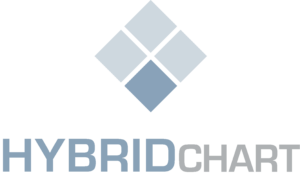The medical field continues to lag behind other industries in terms of process improvement, adoption of modern workflows, and information technology. Physicians and other medical professionals focus their attention on the care of patients, dedicating their lives to the pursuit of knowledge, which could prevent or cure disease. Advancements in business process, clinical documentation, and organization of the workforce have been delegated to non-medical personnel for seemingly good reason. Yet, the uniqueness of the medical world has led to the unintentional disconnection between what medical professionals need, and what they have received.
How We Got into This Mess
When I started medical school, there were processes in place that were archaic, but this was the way it was done. The mechanics of rounds at the hospital were unwritten rules passed down from generation to generation. The ability to spend several hours in the hospital and then see patients in the office seemed straightforward. As healthcare became more complex, largely driven by economics, doctors had to see more patients and round at more hospitals – suddenly time management became a factor. Medical billing has also seen its evolution over time. Simple coding of days past has turned into a sophisticated profession of CPT codes, modifiers, and ICD codes. Stringent expectations on the side of insurance companies made denials more prevalent, trickling up to the doctor to clearly document and code their work if they expected to get paid. At the same time, privacy regulations came into effect, which meant that common communication channels were now off-limits when discussing sensitive patient information.
EMRs To the Rescue
Digitizing the paper world was going to solve everything. How many times did I hear someone say, “This paperless system generates more paper than the paper system”? Everyone has a gripe about EMRs and their shortcomings. I think the roll-out of EMRs was the first concrete example of how business process and information technology were force-fed to doctors with minimal input from medical professionals themselves. The concept of moving patient documentation into databases with easy accessibility and intuitive user interfaces is a good one. Unfortunately, too many assumptions were made by engineers and the large corporations with the resources to develop EMRs about the annoyingly distinct medical workflow, which is not intuitive to an outsider. Reasonable software solutions were introduced into live practices only to be received as clunky and disjointed, mainly due to unforeseen nuances in the medical workflow. Some software solutions were just plain bad. Being “clicked to death” was commonplace.
Top Down Approach
Large companies, armed with their clunky software, but with their ability to penetrate the executive decision-makers of hospitals and healthcare systems, were able to get acceptance of the concept of process improvement. Selling modern information technology to business professionals tasked with making healthcare more efficient made sense. Once the deal was done, these solutions were rolled out from the top down, to physicians who were ill-prepared to resist. Disruptions to workflows, which were already stretched led to decades of resentment and mistrust from medical professionals towards modernization of healthcare. In my opinion, this could have been avoided by using a different approach. Forced implementation of suboptimal solutions on doctors who were scrambling to deal with massive cuts in reimbursement and compounding demands on their need to document every minuscule detail of patient care was not going to end well.
Let’s Try Bottom Up Instead
I decided to design my own software. This far-fetched idea was driven by my desire to fix my broken world, which no one else seemed capable of mending. Frustrated by the chasm between in-patient and out-patient worlds, and tired of long sign-outs and pockets stuffed with billing slips, I created a workflow management tool which helped delegate patient assignments and automated the charge capture process for doctors and the billing department. As my solution grew organically to other practices, something magical happened. The product evolved. New features and modifications were requested by the user-base. The doctors themselves were helping mold the product to the real world, the very same complex medical world which well-intended software engineers tried to and failed to grasp. Minor alterations to the user interface suddenly made the solution intuitive, and once embraced by doctors, indispensable. This crucial step goes well beyond beta testing. It is letting the product live and breathe among different specialties with different needs. It requires listening to feedback and constantly re-versioning the tool to match demands. This step necessitates a physician innovator to design a solution out of real need, and be intimately involved in the maturation and adaptation cycles.
It’s Not Just Software
There are countless medical devices that have emerged from physicians’ innovation. Novel equipment and surgical techniques have been the traditional outlet for physicians who wanted to innovate and change the standard of care. Their proprietary knowledge and highly specialized skill set in their field made them the ideal candidate to promote newer solutions. Yet, there are plenty of examples of software solutions spawned from visionary doctors, ranging from telemedicine to recording of patient encounters to communication platforms between patients and providers. Physician innovators and their ideas need to take a bottom-up approach and gain user acceptance first and foremost. Solving practical issues that have plagued physicians for years needs to come from within. Large-scale ventures to transform healthcare require the expertise and resources of well-established companies. Placing products in their hands that have undergone appropriate acceptance testing may be the secret to success for us all.
Meet EVOLVE by HybridChart – Our fourth generation software platform.
Take control of your entire workflow through a user-friendly solution created by a physician. Medical software too often fails to address the specific needs of providers. Rounding at one or more hospitals presents a unique challenge. There is the need for effective team collaboration and easy charge capture. Census management means true collaboration among provider and staff. Rounding at multiple facilities just got way easier. Covering on-call now has the luxury of essential information for clean hand-offs. Charge capture takes less than five seconds. Diagnoses are easy to find and follow the patient. Customized charge menus make it easy to enter the correct charge. Don’t let billing for your work slow you down. Charge in real-time and focus on caring for the patient.
HybridChart has numerous levels of safeguards against missed charges. The Charge Checker feature will scan every day of an admission and assure there are charges. Using the Charge Matrix you have visibility of all charges from multiple providers per day for any given patient.
Most practices see a revenue increase of 8-10% after using HybridChart – attributed to capturing every charge for every patient. Charges are complex enough with just the diagnosis codes and charge codes. To make your charges accurate HybridChart allows you to easily adjust the Date of Service and assign Secondary Billers such as nurse-practitioners and physician assistants. Modifiers can be built into specific Billing Modules or choose from a customized list managed by your practice. Seamlessly navigate our Charge Capture workflow and save time without losing accuracy.
An automated charge capture system may be the most profitable investment that you can make in your practice today.
You can instantly boost your revenue by 10% using our modern, high-tech and easy-to-implement charge capture system.
Smarter Rounding and Workflow Software for Doctors
At HybridChart, we provide technology that connects your healthcare team, increases efficiencies, AND improves your bottom line. HybridChart’s cloud-based software adapts to your practice’s unique workflow and will improve your profitability and patient outcomes by utilizing our 5 features: census management, charge capture, secure messaging, discharge management, and data analytics.
NEVER miss another charge and get PAID for the work you do!
If you are interested in taking your medical practice to the next level and want to employ the best hospital charge capture practice available in the industry, come visit our website at www.hybridchart.com, or call us at 1-877-684-0608 for a demo today!





